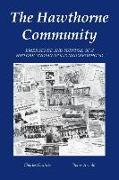The Hawthorne Community
BücherAngebote / Angebote:
Local leaders and residents of urban neighborhoods across the country have mourned the loss of community that once existed in clearly defined neighborhoods. This book tells the story of such a loss. But it also tells about this community's decades of building and success, of hard work and sharing, of creativity and celebration. Hawthorne emerged as a residential working class neighborhood on the fringe of Indianapolis, Indiana. It began in the early 20th century as new arrivals settled on a remaining strip of open farmland two miles from the city's center. An stable society of churches, schools, businesses and social groups evolved and prospered well into the post-WW II era.
From the early 1960s to the late 1990s the residents' expectations of permanence gave way to a gradual but devastating series of developments over which they had no control. Many of the residents and the institutions that had supported them either closed or moved away opening the space for newcomers and rentals. Ultimately the neighborhood lost the network of local institutions that had anchored the community for decades. The Hawthorne Community Center, left virtually alone, continued its work and adapted its programs for a changing neighborhood. It was forced to assume the multiple roles of advocate, primary source for the residents in need, and intermediary between the neighborhood and external sources of support.
The Hawthorne story provides a useful context for any discussions about the future of constantly changing historic neighborhoods and their relationship with the larger urban establishment. Local histories such as this one also offer a valuable tool to help both residents and outsiders free themselves from the negative stereotypes that tend to blame victims for their current situation.
Folgt in ca. 10 Arbeitstagen
